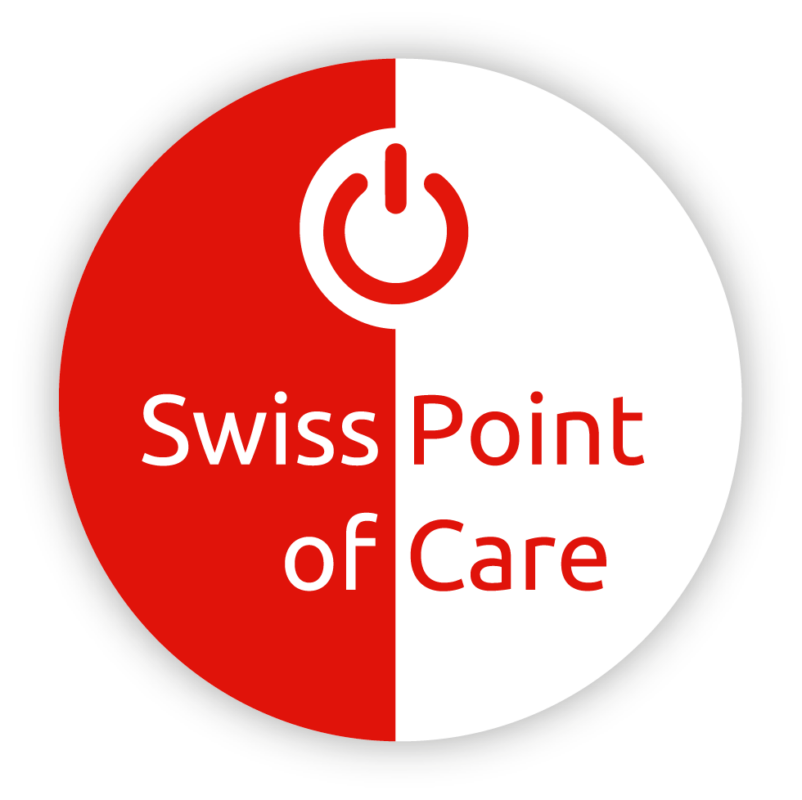Measuring your glucose levels with the On Call Extra
You just bought your Swiss Point of Care On Call Extra Glucose meter and are probably wondering how to measure your glucose levels. No need to worry. On this page you will find a video guiding you step-by-step.
Are you interested to know more about whether your glucose levels are normal, too high, or too low? Read more.
Tell me about my glucose levels How do I measure my glucoseWhat do you need to measure glucose?
You will need a glucose meter, lancets, a lancing pen, and a glucose teststrip. It can be useful to have some tissues with you.
if you don’t have a glucose meter yet, we recommend using the On Call Extra. Curious why? Read more about choosing the right glucose meter.
Glucose meter
Glucose teststrips
Lancing Device
Lancets
Step 1.
Turn on your glucosemeter and a teststrip by placing the glucose teststrip in the meter.
Step 2.
Insert a lancet in your lancing device and place it to the side of your finger tip.
Step 3.
Press the lancing pen until you hear a click. Afterwards a blood drop will form. Wipe away the first drop.
Step 4.
Hold your finger with the blood drop close to the glucose teststrip. It will absorb the blood drop.
And now you’re done!
You just need to wait a few seconds before the meter shows the results.
Do you want to know how to interpret the results?
When is my blood sugar level too high, too low, or normal?
Now that you’ve measured your glucose levels, you’re probably wondering “and now what?”. We got you. In this section we”ll explain what glucose values are normal, too high or too low.
It’s important to measure your glucose repeatedly during the week and at different times of the day. This way you will have a clear picture of what your actual glucose levels are.
Look at the tables in this section to find out if you might be suffering from diabetes or if your glucose levels are normal. If you find out that your glucose levels are too high, please consult a doctor. They can determine if you are suffering from diabetes or not.
Measuring when you haven’t eaten
When you haven’t eaten anything for more than 8 hours your glucose levels are lower. In that case if you have a value below 6,1 it’s a normal glucose level and you don’t have to worry.
Below 6,1 mmol/l – no diabetes
Between 6,1 and 6,9 mmol/l – precondition of diabetes
Above 6,9 mmol/l – diabetes
Measuring when you have eaten
After two hours of eating something, your glucose levels will be at its highest. So don’t worry if the glucose meter shows you higher values. If you stay below 7,8 your levels are considered normal.
Below 7,8 mmol/l – no diabetes
Between 7,8 and 11 mmol/l – not clear
Above 11 mmol/l – diabetes
Can my blood sugar be too low?
Any value below 4 is considered too low. You will notice this right away as you might suffer from shaking, dizziness, low energy, headaches, etc.
How do you chose the best glucose meter?
There are lots of glucose meters on the market, but how do you chose the best? One important thing to consider is if they are TUV and ISO certified. That way you will know the meter is reliable and has minimal margin of error.
Another important aspect is speed and amount of blood necessary. Preferably you have the results as fast as possible, with the least amount of blood necessary.


Why the Swiss Point Of Care On Call Extra Glucose meter?
The On Call Extra glucose meter is ISO and TUV certified, only needs a little drop of blood and delivers your results within 4 seconds.
Furthermore you can store up to 300 results, it warns you to measure your glucose and comes with a practical travel bag so you can take it anywhere you need.
Buy the on Call Extra

 Nederlands
Nederlands Deutsch
Deutsch Français
Français Italiano
Italiano Español
Español